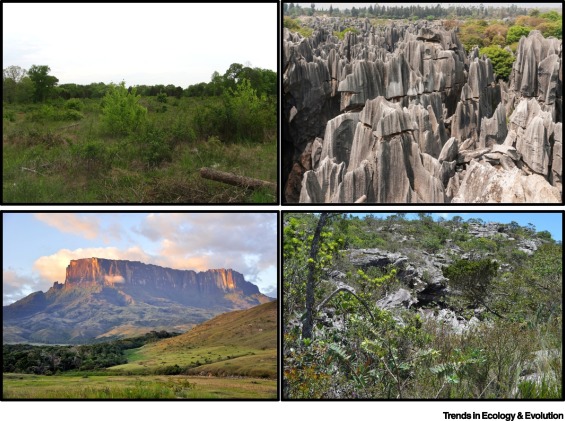
The climate change crisis has resulted in an emphasis on the role of broad-scale climate in controlling species distributions. A key metric for predicting the impacts of climate change on species and ecosystems is the local velocity of climate change: how fast a species must move across the landscape to track its preferred climate in space. However, other ecologically important environmental variables will move much more slowly (e.g., some soil properties) or not at all (e.g., underlying geology).
In a review published in Trends in Ecology & Evolution, researchers from Xishuangbanna Tropical Botanical Garden (XTBG) pointed out that the relative neglect of local edaphic factors risks weakening people’s ability to explain past responses to climate change and predict future ones.
The researchers focused on some immovable environmental variables and specifically on the soil types with extreme chemical and/or physical properties that develop on regionally rare geological substrates, such as limestone karsts, ultramafic rocks, and granite inselbergs (i.e. isolated hills or mountains rising abruptly from a plain, like islands in the sea).
By consulting a large amount of literature, the researchers found that in warmer regions of the world, the edaphic specialists (i.e. species of plants and animals in specific substrates) appear to have accumulated in situ over millions of years, persisting despite climate change by local movements, plastic responses, and genetic adaptation. However, past climates were usually cooler than today and rates of warming slower, while edaphic islands are now exposed to multiple additional threats, including mining.
They further found that species distribution models used to predict climate change responses can include edaphic factors, but these are rarely mapped at a high enough spatial resolution.
"Using low-resolution edaphic data for predictions is likely to give misleading results", said Prof. Richard Corlett, principal investigator of the study.
"We need to improve our understanding of the mechanistic basis for edaphic endemism, in order to predict the vulnerability of these endemics to climate change and other anthropogenic impacts. Reciprocal transplants and resource-addition experiments should be useful for this" said Prof. Richard Corlett.
"We also need to improve the species distribution models used to predict climate change impacts", added Dr. Corlett.

Examples of habitats that support edaphic specialists (Image by Wikimedia Commons)

86-10-68597521 (day)
86-10-68597289 (night)

52 Sanlihe Rd., Xicheng District,
Beijing, China (100864)

